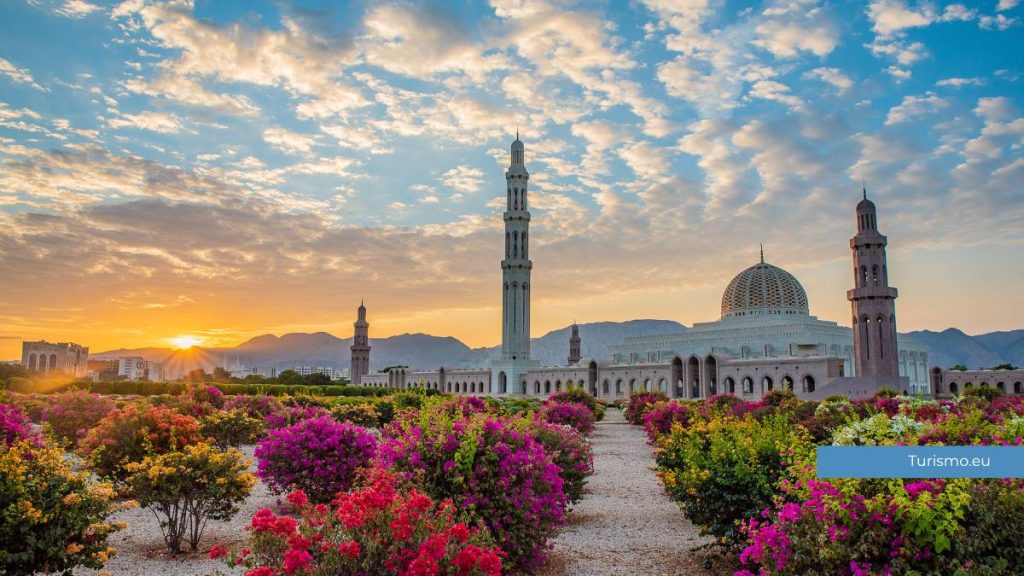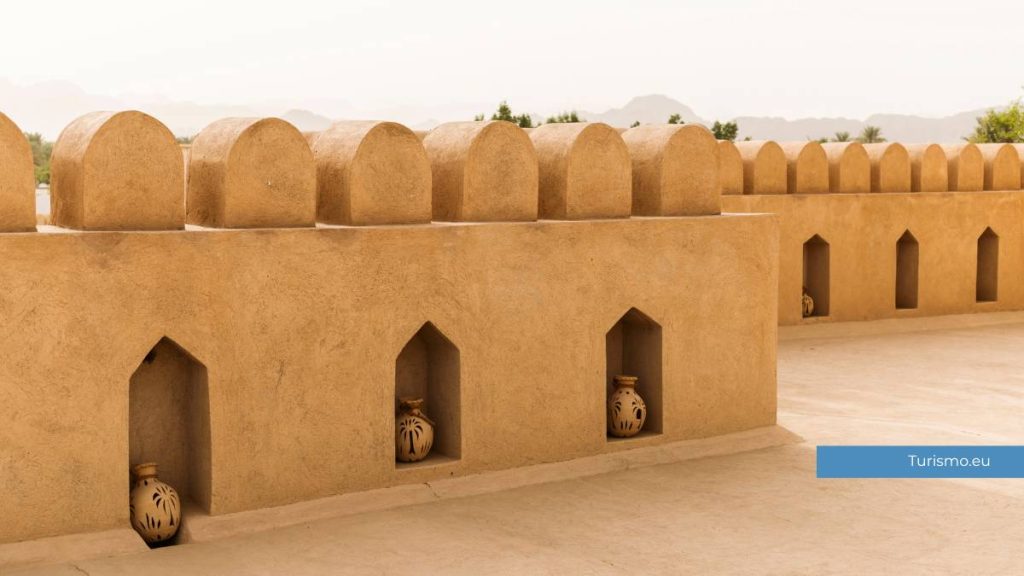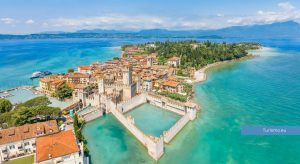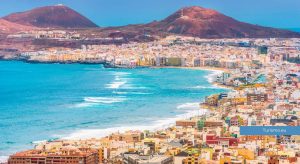Travel Itinerary in Oman: Discovering an Arabian Gem
Oman is a country that will surprise you with its diversity: from mountains to deserts, pristine beaches, and cities rich in history. Every corner of this country tells an ancient story, where tradition and modernity blend harmoniously.
What to See
Start your journey in Muscat, the capital, where you can explore the Sultan Qaboos Grand Mosque, an architectural masterpiece featuring a gigantic Persian carpet and a stunning chandelier. Stroll through the Mutrah Souq, a traditional market where you can lose yourself among the scents of spices and handmade crafts.
Head to Nizwa, the ancient capital, famous for its fort and the Friday livestock market. Here, you can immerse yourself in local culture and admire Omani craftsmanship. Continue to Jabal Akhdar, the “Green Mountain,” part of the Al Hajar mountain range. Here, the terraced fields of roses and pomegranates will offer breathtaking views.
Don’t miss the Wahiba Sands Desert, where golden dunes stretch as far as the eye can see. Spend a night in a tented camp to experience the magic of the desert under the stars. Finally, visit Salalah, in the south, a lush region that contrasts with the aridity of the rest of the country. During the monsoon season, the area transforms into a green paradise.
When to Go
The best time to visit Oman is from October to March, when temperatures are milder and more pleasant. Avoid the summer months, especially from June to September, when the heat can be intense, particularly in desert areas. If you want to experience the uniqueness of the monsoon in Salalah, plan your trip between June and August.
Curiosities
Did you know that Oman is one of the few countries in the world where you can find frankincense? The Dhofar region, around Salalah, is famous for its production. Frankincense was so valuable in ancient times that it was considered “white gold.” Additionally, Oman is one of the safest countries in the world, with a very low crime rate, making it ideal for solo travelers or families.
Recommended Two-Week Itinerary in Oman
Oman is a country worth exploring at a leisurely pace, and two weeks will allow you to discover not only the main destinations but also more remote and lesser-known corners. This itinerary will guide you through historic cities, stunning deserts, majestic mountains, and paradisiacal beaches, offering you a complete and unforgettable experience.
Day 1-3: Muscat, the Fascinating Capital

Begin your journey in Muscat, a city that perfectly embodies the spirit of Oman, blending modernity and tradition.
- Day 1: Dedicate your first day to visiting the Sultan Qaboos Grand Mosque, an architectural masterpiece with a giant Persian carpet and a dazzling chandelier. In the afternoon, stroll along the Mutrah Corniche and explore the Mutrah Souq, where you can buy spices, incense, and handicrafts.
- Day 2: Visit the National Museum of Oman to delve into the country’s history and culture. Continue with a visit to the Sultan’s Palace (from the outside) and the Bait Al Zubair Museum, which offers insights into traditional Omani life.
- Day 3: Explore the surroundings of Muscat. Visit Qurum Beach for some relaxation or head to Bimmah Sinkhole, a spectacular natural pool surrounded by rocks. End the day with dinner at a local restaurant to try dishes like shuwa (slow-cooked meat) or mashuai (grilled fish).
Day 4-5: Nizwa and Jabrin, the Historic Heart

- Day 4: Travel to Nizwa, the ancient capital of Oman. Visit Nizwa Fort, an imposing structure with a circular tower offering panoramic views of the city. If it’s Friday, don’t miss the livestock market, an authentic and unique experience. Also explore the Nizwa Souq, known for its silver items and traditional daggers (khanjar).
- Day 5: Visit Jabrin Fort, located about 30 minutes from Nizwa. This fort is one of the most beautiful in Oman, with decorated rooms and frescoes that narrate the country’s history. In the afternoon, stop by Bahla, famous for its UNESCO-listed fort and pottery production.
Day 6-7: Jabal Akhdar, the Green Mountain

- Day 6: Head to Jabal Akhdar, part of the Al Hajar mountain range. This area is famous for its terraced fields of roses, pomegranates, and apricots. Walk along the trails that pass through traditional villages like Al Ayn or Wadi Bani Habib.
- Day 7: Dedicate the day to hiking. The Rose Trail is a must, especially during the blooming season (March-April). If you prefer a more relaxed experience, visit local farms to learn how roses are cultivated and essences are produced.
Day 8-9: Wahiba Sands, the Golden Desert

- Day 8: Travel to the Wahiba Sands Desert, a sea of dunes stretching for kilometers. Driving over the dunes is an exhilarating experience, but make sure to rely on an expert driver or rent a suitable 4×4. Spend the night in a tented camp to fully experience the magic of the desert under the stars.
- Day 9: At dawn, enjoy the sun illuminating the dunes with golden hues. After breakfast, visit a Bedouin village to learn about their culture and traditions.
Day 10-12: Sur and the Turtles of Ras Al Jinz

- Day 10: Travel to Sur, a coastal city famous for its shipyards where traditional dhows, wooden boats, are built. Visit the Maritime Museum to learn about Oman’s seafaring history.
- Day 11: Head to Ras Al Jinz, a nature reserve where you can observe green turtles laying eggs on the beach. It’s a unique experience, especially at night or dawn.
- Day 12: Explore Wadi Shab and Wadi Tiwi, two spectacular valleys with natural pools and waterfalls. These places are ideal for hiking and cooling off during the day.
Day 13-14: Salalah, the Paradise of the South
- Day 13: Take a domestic flight to Salalah, in southern Oman. If you visit during the Khareef (monsoon, from June to September), you’ll find lush vegetation and spectacular waterfalls. Spend the day visiting the Al Baleed Ruins and the beaches of Mughsail.
- Day 14: Explore Wadi Darbat, a green valley with lagoons and waterfalls, perfect for a picnic or a walk. Also visit the Salalah Souq to buy frankincense and myrrh, typical products of the region. Conclude your trip with a flight back to Muscat or your final destination.
Practical travel tips
- Visa: Check if you need a visa before traveling. Many countries can obtain it online.
- Clothing: Pack lightweight but culturally respectful clothing. For women, a scarf is useful for covering up in mosques.
- Transportation: Rent a car to explore the country freely. Roads are well-maintained, but drive cautiously.
- Currency: The local currency is the Omani Rial. Carry cash for traditional markets.





